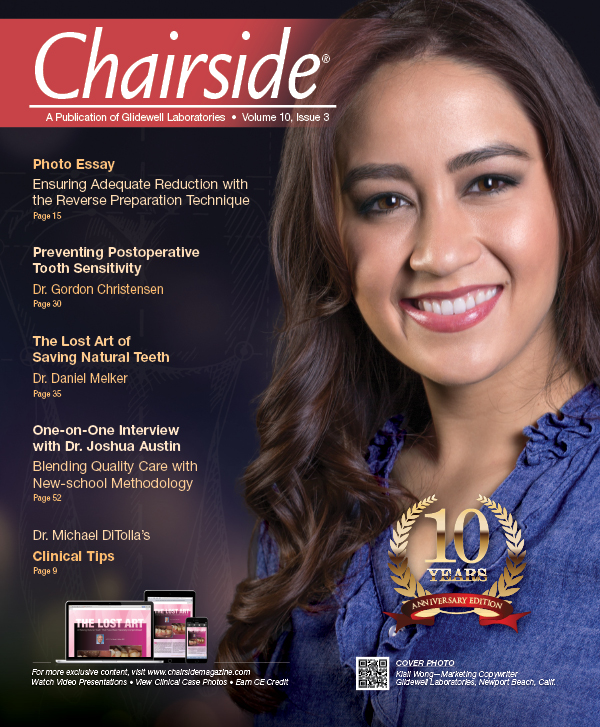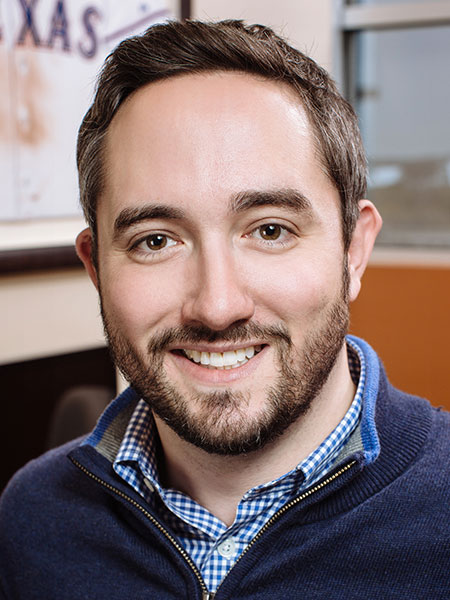One-on-One with Dr. Michael DiTolla: Interview with Dr. Joshua Austin
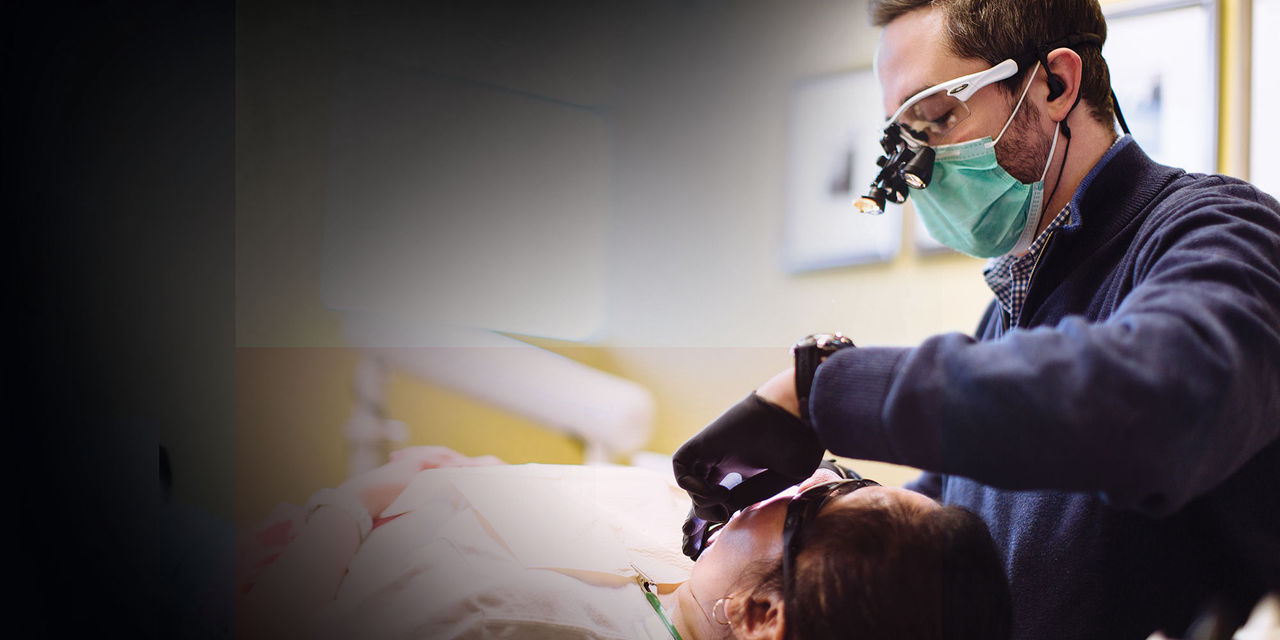
Dr.Joshua Austin is a solo practitioner in San Antonio, where he has braved one of today’s seldom-traveled paths: starting a practice from scratch. Seemingly destined for dentistry thanks to his family’s robust dental legacy, his brand of quality care blends a patient-centric focus with a knack for social media and solid relationships with specialists. Read on to find out how this dental lone star shines in the Lone Star State.
Dr. Michael DiTolla: Josh and I were introduced to each other by Dr. Chris Salierno, who’s the editor in chief of Dental Economics® (Tulsa, Okla.) magazine. Josh took over the prestigious “Pearls for Your Practice” column, and I started writing a monthly column that used to be called “From the Laboratory,” but now it’s more the article that I really wanted to write, called “Confessions of an Average Dentist.” So we were introduced to each other, we instantly hit it off, and we started a podcast that we do weekly called the “AcciDental Geniuses.” Josh, thanks for being with us.
Dr. Joshua Austin: Well, thanks for having me. It’s always an honor to do anything with you. The podcast has been a bunch of fun. Of all the things I’ve done in dentistry, it’s probably the thing that I have the most fun doing and I’m the most proud of. I’d say 98% of that is you. You make it very easy.
MD: Josh has a different perspective on dentistry than I do because he graduated from school just under 10 years ago, and so he remembers what it’s like to be a young dentist, while I’m all too familiar with what it’s like to be an old dentist. What inspired you to go to dental school, Josh?
JA: Like you, my dad was a dentist, and so I was around it a lot as a kid. Actually when I was probably 5 or 6, my dad sold his practice and went to teach at the dental school here in San Antonio full time, so I was always around the dental office or the school as well. Some of my earliest memories are going up to his office and being a guinea pig for stuff like teaching students how to take photos with an SLR camera. My dad passed away when I was probably 10 years old, and so my brother-in-law, who is a very good restorative dentist here in town, kind of stepped up and became my mentor. He and I were very close when I was growing up. And then my sister is a hygienist. My mom worked as a hygiene coordinator in the front desk. So it’s kind of a family business. I’ve always been around it.
MD: Now, I’m guessing that when you were 5 or 6 and your dad made the decision to leave private practice and go to a dental school, at the time it probably didn’t seem like a big deal to you. But looking at it now, it must seem like a way bigger, even a momentous, kind of decision. Did your dad talk about it much at all then, or was it just something that happened?
JA: Yeah, it didn’t seem all that strange. This was probably in 1983 or ’84. My dad had started one of the first big group practices in Texas. It was a six-doctor group, the biggest practice in Amarillo, Texas, by far. And he just worked a ton. I think he got to the point where he was just like, “I don’t want to work this hard while my son is growing up and while I have a chance to be a dad.”
With the dental school at that point, most of the faculty members were former Air Force guys. And there was a real disconnect between what dental students were being taught and what private practice was like because a lot of the faculty had never been in practice; they had only been in the military. There was a big push for faculty-student relations to get better and to have some faculty who had private-practice experience. My dad fit that perfectly. It’s not uncommon for me to get an email, a message, a letter or a phone call from a dentist in their 50s who was taught by my dad back in 1984 or ’85 who still remembers him fondly. I think he touched a lot of people’s lives that way, by not being that rigid former military kind of difficult professor.
It’s not uncommon for me to get an email, a message, a letter or a phone call from a dentist in their 50s who was taught by my dad back in 1984 or ’85 who still remembers him fondly.
MD: You know what’s fascinating about that? Even in my own mind, when you said he left private practice to go to dental school, the assumption is: Oh, he was struggling in private practice, so he went to dental school. It’s amazing to hear that he had one of the first group practices in the city or the state and was really doing well financially. It sounds like he kind of burned out from how tough he was working and wanted to reconnect with something that he had a real passion for, which was education.
JA: Yeah, when I talk to my family about what the day-to-day was like in that practice, with 11 hygienists working between four of them, it just makes my mind explode. I don’t think I could handle it. I can definitely see what led him that way.
MD: I look back on my dental school education from 25 years ago, and I see some huge holes that were not filled. Somehow I ended up being the first student in the history of the University of the Pacific who got to do six veneers while I was in dental school, but there’s also huge gaps in my education as well. Now that you’ve been out of school for 10 years (UT Health Science Center San Antonio School of Dentistry), tell me what you think some of the strengths and weaknesses of what you learned in dental school were, and how it’s affected what you do now.
JA: We did a lot of implant stuff, or at least my patient pool needed a lot of implant stuff. I probably restored eight or 10 implants while I was in school: a couple of Locator® dentures (Zest Anchors, Inc.; Escondido, Calif.) and then a lot of single units and maybe one bridge. So, we’re pretty strong there. We’re very strong in operative, very strong in oral and maxillofacial surgery (OMS). The pre-doc faculty was very good. It was the same couple of guys every time, so they really got a good feel for where everybody was at and who needed help where. I felt coming out that I could get a lot of teeth out that probably other grads couldn’t. I think single-unit fixed was probably a stronger point than at least some other things. We didn’t do a ton of endo; I think that’s a problem at most dental schools, just because generally if you’re going to dental school, you don’t have the income to do endo, post-and-core and crown.
We really didn’t have an occlusion class, which always felt weird to me. Like we had Behavioral Dentistry II senior year, but no occlusion. Looking back on it, I kind of understand. My freshman year was when the University of Nevada, Las Vegas dental school opened, and they poached our entire occlusion department. Literally all four occlusion guys left to go to UNLV. So there really wasn’t an occlusion department when I was in school. The one thing that sort of unites all aspects of dentistry is occlusion; we didn’t have it.
MD: Yeah, I heard that when your class graduated, they realized they had forgotten to teach you anything about occlusion. It was really at the commencement speech where they said: “Have ’em bite on this paper. Then grind on the blue spot. You’re going to want to write that down, graduates.”
JA: Yeah, on the back of the program.
MD: Yeah, we didn’t have an occlusion department either. We had a class called Waxing to Occlusion, where we were waxing up crowns using cones and building at the cusps and the cuspal slopes. But occlusion was not a unified concept. So it’s amazing to think that 15 years after I graduated, it still wasn’t being taught as a cohesive group.
The one gaping hole in our education was orthodontics. When I was in school during those three years, we spent a full 13 minutes dedicated to it. So, we really came away with a deep understanding. How did you feel about your orthodontic education compared to the other specialties?
JA: I think that’s just a given at most schools. I distinctly remember a lot of the class wanting to become orthodontists because that’s what their experience with dentistry was: They had a cool orthodontist when they were 14 years old, and they liked them. But you could see the faces of people within the first 15 minutes of ortho class sophomore year, when they had us calculating moments and forces and vectors and stuff like that. They were like, “This is awful.” I don’t understand why they do that; it doesn’t serve anybody well. I’m not saying teach comprehensive orthodontics, but there’s got to be a way you could teach me to do some adjunctive kinds of things that would make my restorative outcomes better; a little extrusion when you have some deep decay, or some intrusion to fix a super-eruption, or some molar uprighting. There are some things that can be done adjunctively in orthodontics that can make our lives and the laboratory’s life a lot easier.
MD: Yeah, like some pre-porcelain veneer anterior tooth rotation so you don’t have to prep 4 mm off the distal line angle of tooth #7, for example. That would come in handy. I still think that orthodontists were the original esthetic dentists long before veneers were around, and I still think orthodontics is the ultimate in esthetic dentistry. It’s what I chose for my kids. All three of my kids went through ortho because I wanted their teeth straightened in a more organic fashion. I believe Dr. John C. Kois when he says, “The best dentistry is no dentistry.” If we can rotate teeth and maybe develop some arches when they’re younger and then whiten their teeth, that is far superior to bonding on 12 porcelain veneers.
When you got out of school, it was a different landscape than when I graduated from school. I had a different perspective because my dad was still alive and was all too happy to sell me his practice at what I’m pretty sure was an inflated rate. But your dad had already passed away. Had he been in private practice, it would’ve been interesting to see if you were drawn to this super profitable practice that might have ground your soul into little pieces because you had to work so hard. When you did graduate, what were your options, and what did you finally decide to do?
JA: I went for a couple years and associated with my brother-in-law at his very boutique, high-end practice. At any given time, he probably has a few full-mouth rehabilitations going. He had three operatories and one hygienist; so between him and me and the hygienist, we each had one operatory. No overflow or anything. So, I was kind of forced to move on from there, even though I didn’t really want to, just because we didn’t have the facilities to accommodate all of us, and there wasn’t really anything on the horizon as far as a new facility went. So then I went and associated in a more, I would say, culturally diverse part of town in a bit of a historic neighborhood; a little bit more urban, which was good. I got to learn some really good bread-and-butter type dentistry. The dentist that I worked for was a very good dentist. His preps were really nice, and he did really good dentistry, worked his butt off. I learned some good stuff from him. I was there for four years and then decided to go off and start my own thing back in the neighborhood that I grew up in.
MD: So, you actually started a practice from scratch.
JA: Yes. I looked around. I looked at practices to buy, and they were all in 30-year-old buildings with 30-year-old equipment and 30-year-old cabinets. Yeah, they had deep patient bases, but nothing was the right situation, and none of them were offering a big discount on any of those practices. It was either pay top dollar for a practice that’s not really where I want it, without the kind of stuff that I want in it, or just start my own for less money, keep it lean and mean for a couple years, and then build it up. So that’s what I decided to do.
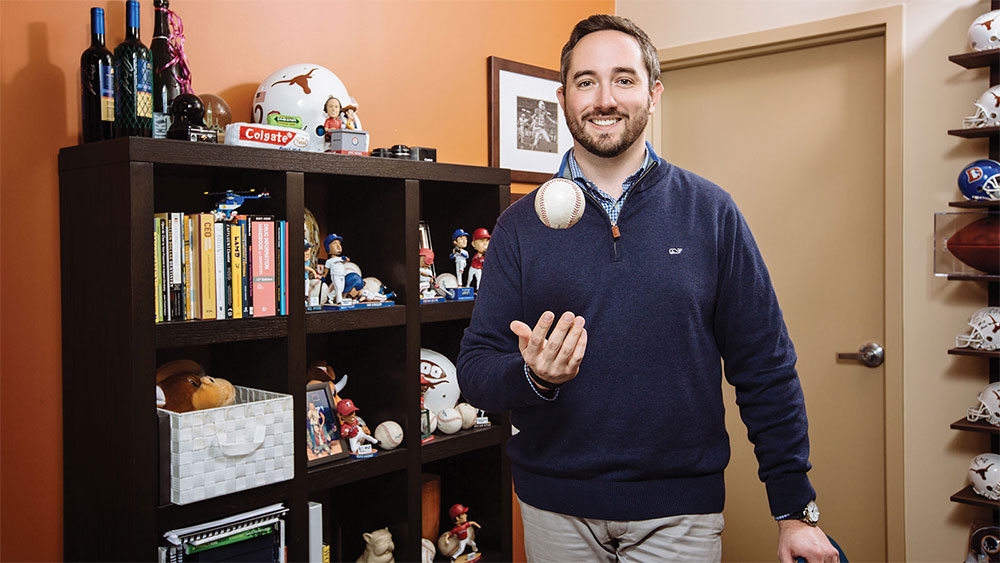
MD: Well, I think that’s the dream, and I’m impressed that you were able to do it because as time goes on it seems like it’s tougher and tougher to start a practice from scratch. What do you remember those first few months being like? Was there a lot of time when you were just sitting around playing fantasy baseball?
JA: You know, it’s funny; within the last year I went back and just flipped through the schedule from my first month. Some days were pretty good, and then there were some days where it was just big chunks of nothing. And I was wondering to myself: How was I not panicking at this point? But you know, I opened within a few miles of where I grew up. The advantage of that is that you know a bunch of people, people you went to high school with and knew after college and worked with. So I had a decent patient base to start, and I had been practicing for five years, so I had a couple hundred patients that were coming with me. Also, the visibility in front of my office is great. There’s always a traffic jam on the highway in front of my office, so people are stuck in their car looking around. I think that’s been a huge thing for me. And because I had so much time early on, I got on the social media train pretty quickly and built a pretty decent social media following. Then, along with that came some really good online reviews. That got the ball rolling, and we’ve been able to keep that momentum going for now almost six years.
MD: Yeah, in fact you lecture about social media and how dentists can be more involved. I know that you’re actually doing this and using social media to great effect. I’m blown away constantly by the pictures that you show me on Facebook and Instagram (and some of those pictures are of teeth).
It seems like you had a calling fairly early on that you wanted to be a dentist. Tell us what high school you went to, because I didn’t know these types of high schools existed.
JA: I went to a magnet school. In San Antonio, there are probably five or six different magnet schools, and I went to one that’s specifically for health care, called Health Careers High School. Basically, starting freshman year, we had a lot of medical terminology classes, Latin for medical root words. Then, starting in junior year, our electives were lab courses. I had a dental lab course where we learned how to take radiographs, take alginates, pour models, make bleaching trays; dental assisting stuff. We learned instrument identification, tooth anatomy and morphology. I got some exposure to stuff that average high school kids wouldn’t have gotten a chance to get exposure to. Now, you sacrifice some of the social stuff. It was a small high school. There were 200 in my graduating class. We didn’t really have any sports teams other than what they called the “life sports.” So, if a doctor plays it, then that was a sport we had: golf and tennis, cross-country, track and swimming. It wasn’t a typical high school experience, but I think it was worth it in retrospect.
MD: Just to make sure I understood you correctly, you said you poured models and made bleaching trays in high school?
JA: Yeah.
MD: That is unbelievable. The only specialized high schools I know about in California are the fame schools, so when you told me you went to a magnet school, I just assumed you could tap dance really well. It’s amazing that you did that.
I’m wondering how you feel about GPs surgically placing implants. Are you currently placing implants? If not, why haven’t you started doing that?
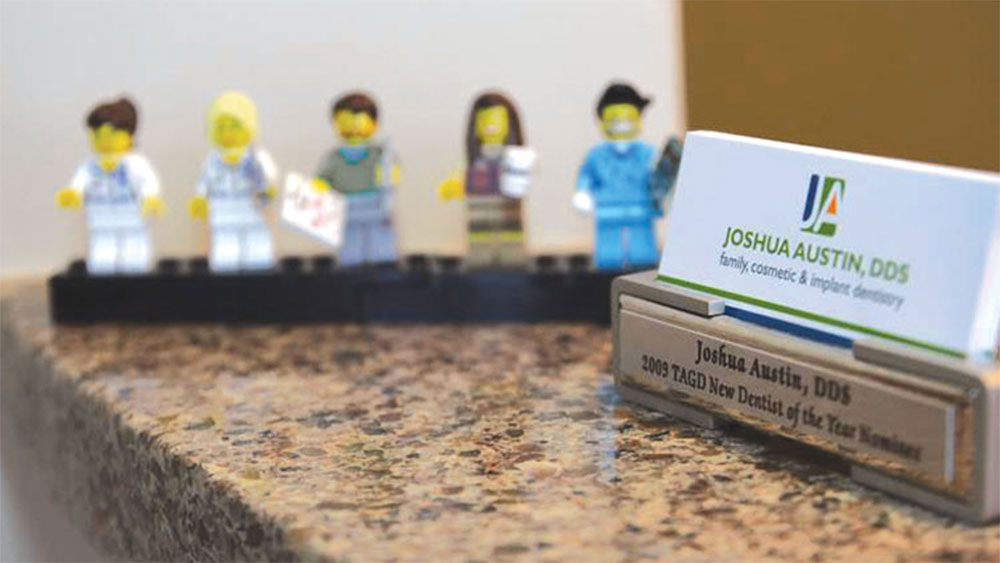
JA: I’ve placed one in my life, and that’s probably enough for me. It was fine. The patient is still coming to see me at recall. It’s still there, still in function, still doing OK. I know the easy ones are kind of a no-brainer, and I know with guided surgeries and CBCTs and intraoral scans, it can be that way. It’s not something I’ve really gotten into just because, really and honestly, I like to have good relationships with my specialists, and that’s one way I can do that. It’s the same thing with endo. I don’t do a ton of endo because as long as everything’s going right, I have no problem with it, I can handle it; it’s when something goes wrong and I don’t have the same skills that they have to troubleshoot it. We were always taught it’s fine for general dentists to do things that a specialist can do, but they have to do it to the same level at which the specialist does it. And I’m not 100% sure that I could do that. I know that I could with CE and training and all that kind of stuff, but I would rather focus on the restoration and the restorative dentistry side of things because there’s a lot of stuff that can go wrong there, and I don’t know if that can ever really be fully mastered. If I ever do become a restorative dentistry master and I’m just looking for things to add to my repertoire, that might be it. But I would have a hard time being a really good surgeon and a really good restorative dentist at the same time.
I would rather focus on the restoration and the restorative dentistry side of things because there’s a lot of stuff that can go wrong there, and I don’t know if that can ever really be fully mastered.
MD: Yeah, one of the reasons that my generation kind of grew up afraid about surgically placing implants was that the implants we saw were blade implants and subperiosteals. It was very aggressive surgery. Then it morphed into root-form implants. Then we had surgical guides, which were going to be the great breakthrough to allow GPs to place these with a high degree of precision. So it’s interesting to hear your viewpoint as a younger dentist who may not be as afraid; but by the same token, if you have specialists in your community, whether it’s endo or oral surgery or ortho, why not let them do it? Have you surrounded yourself with a pretty good team of specialists to do those types of things?
JA: San Antonio has a great community of specialists, partly because there’s a dental school here and a huge military base. There’s a lot of really well-trained specialists. The periodontist who I had do crown-lengthening on a case that we’re going to restore at Glidewell lectures about esthetic crown-lengthening all over the country and the Seattle Study Club network. Even if I was really great at esthetic crown-lengthening, there’s no way I’d be better than Dr. Eric Rindler, just because I don’t do it all the time.
I wrote about it in one of the mailbags in my Product Navigator newsletter through Dental Economics recently. I said one of the most valuable things in my life is I have a really great friendship with the endodontist who I refer to. It’s not that I’m calling over there and asking for favors all the time. But just having the feedback, knowing that he has my back and I have his back, we kind of take care of each other. If he has a patient who’s unhappy with the restorative dentist who sent them over there, he can get them to me; and I have him to help me through any situations that might be endodontically challenging. It’s a very rewarding relationship for both of us. I respect the guys who can do everything themselves. It’s just not what I want to do.
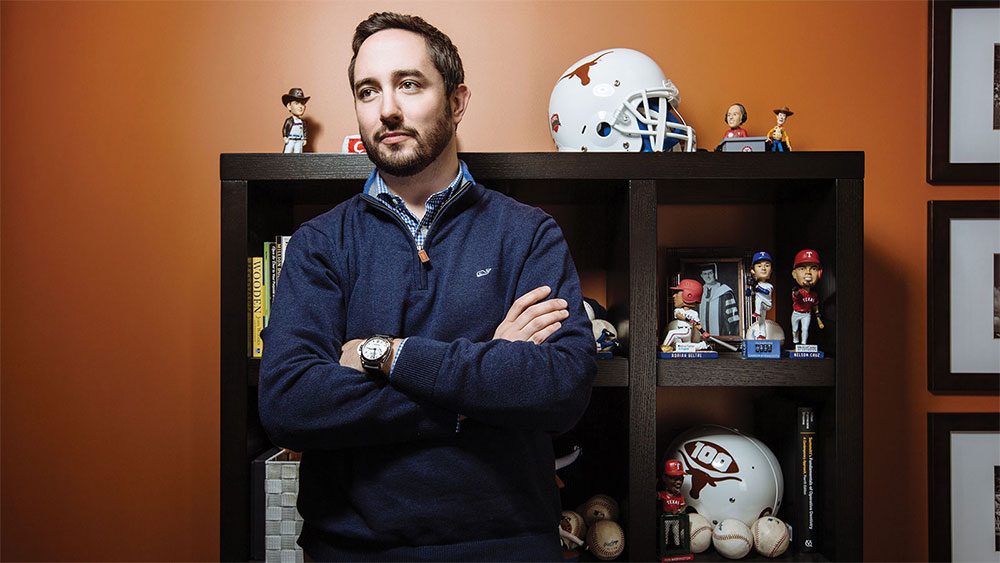
MD: Right. I think it comes down to more than whether or not you can do it; it comes down to whether or not you want to do it. Your dad is a great example. It sounds like he did this big-group practice model for a while and then thought, “You know what? I’d rather focus on something else that’s more fulfilling to me.” I don’t think there’s anything wrong with that.
As a graduate today, I feel like there are more options available than when I got out 20–25 years ago. For somebody who graduated a year, maybe two years ago, how do you see that landscape of choosing private practice versus going with a corporation?
JA: Well, the corporate model has been around for a long time, but I think in the last decade it’s really exploded. It’s just like somebody who’s a solo practitioner: There’s good ones, and there’s bad ones. There are ones that are ethics- and patient-focused, and there are ones that are financially focused. The statistics over the last three or so years are basically that 50% of graduates are going that DSO route, at least for their first job. I think at the end of the day, no matter where it is you work, whether you work for private practice, whether you work for a DSO, or whether you work in a government clinic providing care in some remote place; wherever it is, first things first is your personal ethics and not doing something that you’re not comfortable with or that’s not right for the patient. That has to be the bottom line.
My girlfriend, Dr. Andrea Janik, has worked for a lot of different models. She worked in sort of a government clinic; she worked in a very high-end private practice in Highland Park, Texas, which is a super ritzy, affluent neighborhood of Dallas; she’s worked in a regular, suburban, blue-collar private practice; and now she’s working for PDS. And this is a quote straight from her: She’s never been happier than in the model she’s at now. She’s an owner-doc. She owns half of the practice. PDS owns the other half. Not one time have they tried to influence her decision-making, trying to get her to treatment plan one specific procedure more than another, or whatever. She has total autonomy as far as the clinical aspect of dentistry goes. It’s been a very good thing for her, and she really enjoys it.
MD: Yeah, she told me that same thing, that she’s never been happier. And she said that included all of her years dating you, and I thought, “Oh, that’s an interesting point.”
In fact, that brings me to another point that I wanted to ask you about. When I first Googled your name, I was surprised to see something. Besides being well-loved by your patients — many five-star Yelp reviews from patients and all that stuff — apparently you were also well-loved by some bachelorettes in San Antonio because at a certain point, you were named one of San Antonio’s top 10 sexiest bachelors. Do you have any recollection of what I’m talking about?
JA: I do. I have a slight recollection of this.
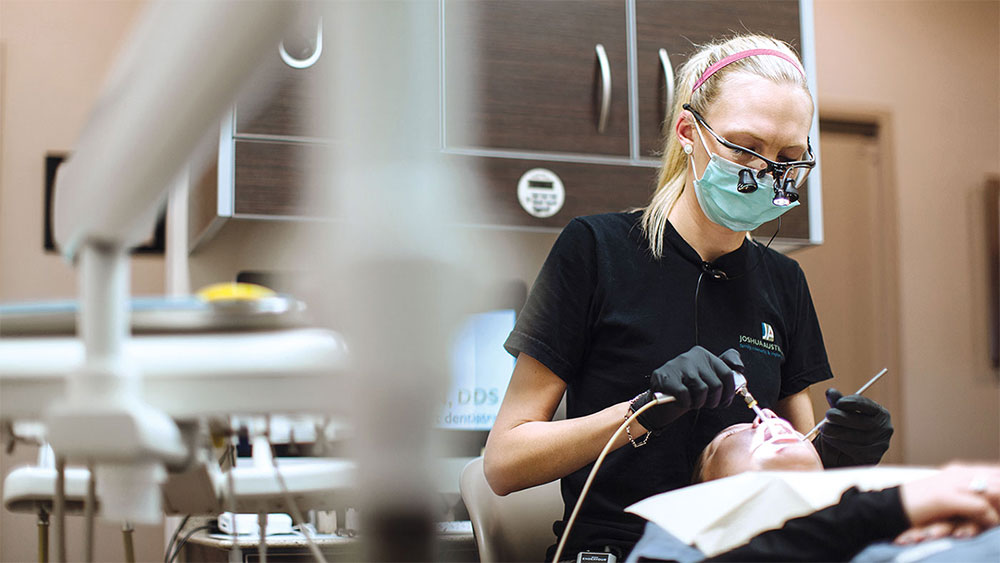
MD: Yeah, OK. Go ahead. Tell us a little about it, would ya? I know that you’re the past president of the AASD. The American Association of Sexy Dentists. Is that correct?
JA: Uh, yeah — I’m immediate past president.
MD: OK, good.
JA: So every city has a magazine that has stuff about the city and things to do. San Antonio is no different. It’s called San Antonio Magazine. Every year, they have this “bachelor” edition. Basically, they have people nominate friends or family or whomever, and a patient of mine nominated me. There were probably 60 people they decided to interview, and they brought us in on a big cattle call. I got interviewed with 10 other people. We did the interview, and then I got a phone call saying that I was selected if I’d like to participate. And then they go on to tell you that they’re going to use this to raise money for the Wounded Warriors. Well, once they say that, you can’t say “No.” It’s kind of a jerk thing to say no to the Wounded Warriors, especially in San Antonio where the military is a vital part of the city. So, they said, “Hey, all of the proceeds of this go to the Wounded Warriors,” and I said yes. It was me and nine other guys. They wrote a magazine article about each of us, and we were on the cover. Then we made the rounds to all of the morning news shows.
MD: Really?
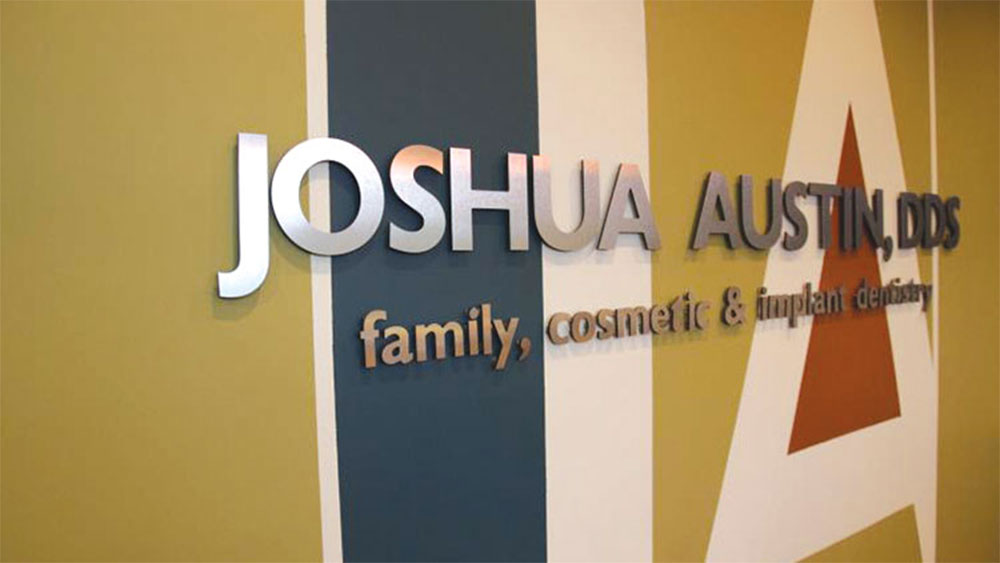
JA: Yeah, and then this all culminated to an event, which was like a bachelor auction. They auctioned each of us off with a date package, and my date package was a Spurs game and dinner at a nice restaurant here. It was a good date package. I got auctioned off, and all of that money went to the Wounded Warriors Foundation.
MD: So, there were nine other people who were auctioned off besides you.
JA: Yeah, nine other guys.
MD: Among those 10 guys, where did you fall when the auction was said and done?
JA: I brought in the most.
MD: Yes, you did, and that’s why we’re doing the podcast together instead of that other guy you hate-follow on Twitter, just so you know. I only hang around with winners, Josh.
JA: Thanks, man. I appreciate that.
MD: And I don’t want to be a one-upper, but last year I was named to the Top 10 Baldest Dentists in Orange County. Just saying.
JA: That’s awesome. Bald is attractive now, right? Like, the Bruce Willis thing; you’ve got that going. Plus, much better that than nursing along a comb-over.
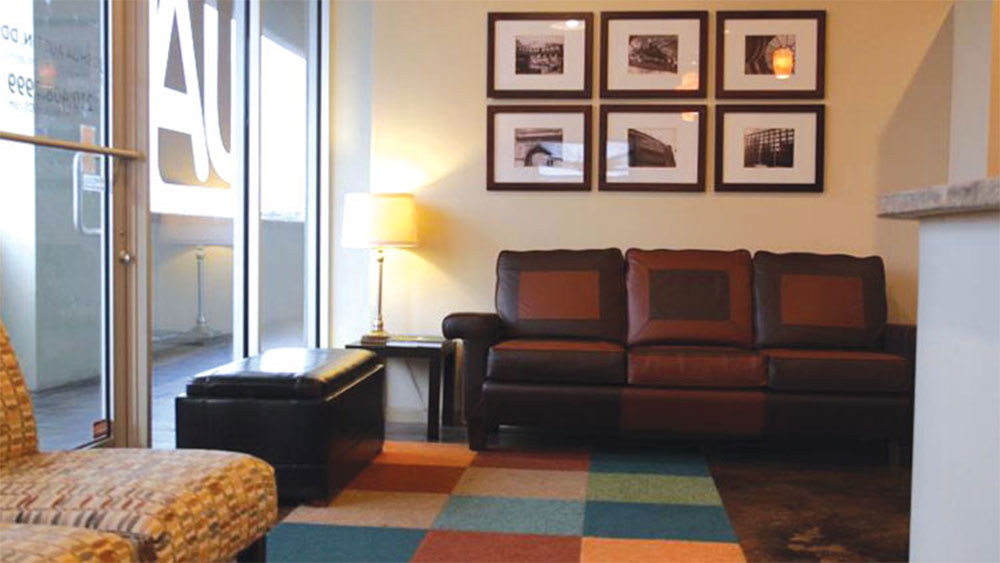
MD: Well, let me ask you this: If in fact bald is attractive, how many bald guys were in your top 10 bachelors of San Antonio?
JA: One for sure, one who was on his way. Yeah, there was one. I mean, he shaved his head. I think it was a similar type situation where he saw the writing on the wall and said, “Ya know, I’m taking the bull by the horns.” Of all the guys that were in that, he’s the one that I’m still good friends with. And he’s a patient. And he’s ripped. He’s legitimately ripped, and he ripped his shirt off during the auction.
MD: Wow.
JA: And that’s all with a shaved head. So, see? It can happen.
MD: He ripped his shirt off and showed a six-pack, but you were able to outbid him because of your ability to shake your hips to that song by The Outfield. Who was the woman who bid, and how much did she bid for you?
JA: She was a very nice young lady who apparently had some money to blow. I’ll keep the amount to myself so as to not sound self-flagellating.
MD: That’s fine. I know a little about it. It’s between $20 and $8 million. We’ll leave it open to the imagination of the readers.
Tell me about your perfect day. If you went to the office tomorrow, if you walked in and saw a schedule, what would make you go: “Oh, yes, this is why we’re here. This is what we’re doing.” Take me through the 8 a.m.–4 p.m. of your perfect day.

JA: First of all, it’d be a day when I only have one hygienist in. My days when I have two hygienists in just seem to get really hectic, and having to get up twice stinks. So, I think a couple crown preps to start in the morning would be nice when I’m nice and fresh, and then maybe a crown seating or two toward the end of the morning. Maybe some composites or something like that. I wouldn’t mind starting an Invisalign® case (Align Technology, Inc.; San Jose, Calif.) right after lunch and then maybe head in to deliver a couple more crowns on top of doing a sleep appliance or obstructive sleep apnea consultation or delivery — something having to do with sleep apnea — somewhere in there.
MD: Yeah, that variety is the spice of life. There are a lot of doctors I’ve asked that same question to, and they’re like, “Fourteen units of crown & bridge, man.” They just want to hammer the crown & bridge.
JA: That’s fine. However, when I have a big case where it’s six or eight units, and I’m prepping on one patient, that’s fine and I enjoy it. But at the end of that, I’m beat. That’s four hours of stress. Sometimes there’s the sedation on top of it, so I’m managing the sedation and all that. I would much rather do an Invisalign start, a sleep appliance, and a few single-unit crowns. That’s probably more profitable and more enjoyable; I have more energy at the end of the day than with a 6- or 8-unit anterior prep day where I’m just demolished at the end of the day.
MD: You didn’t mention endo, taking out wisdom teeth or pedodontics. Does that sound about right? In your perfect day, you’re probably not going to do those?
JA: I don’t mind any of them. Endo, I’m probably not going to do a ton of, unless it’s really simple. Pedo is OK. And as far as thirds go, I don’t mind some oral surgery and taking out some thirds. Sometimes you can get into those and you’re done in five minutes, and it took you longer to get them numb and get the consent than it did to take them out. Those are fun. But the ones where you’re spending 40 minutes kind of troughing for a little root, you know; you’ve lost some stomach lining; you’ve lost profitability for sure; you’re keeping somebody waiting somewhere. It’s just stressful. It’s stressful on you and stressful on the staff. So, I could take it or leave it.
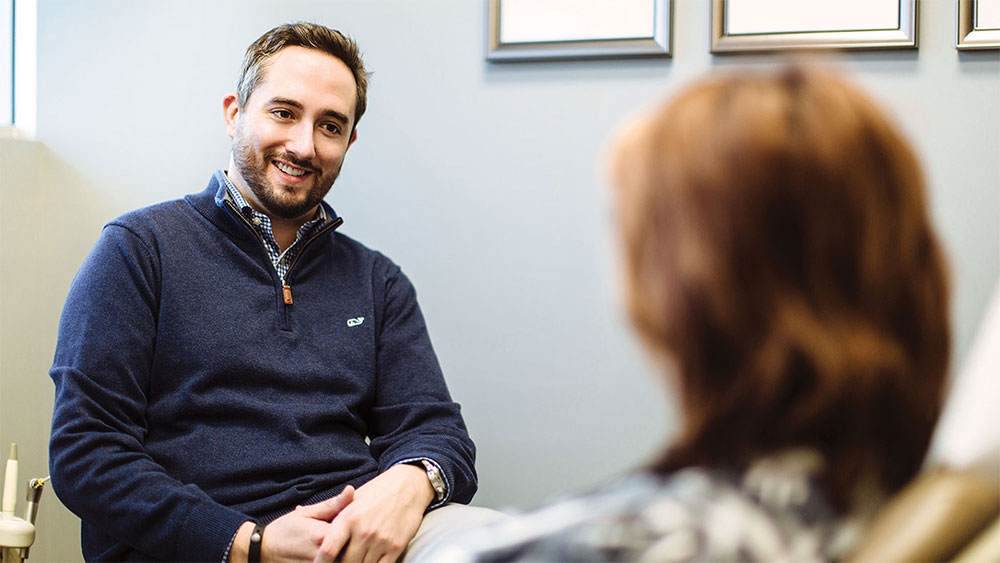
MD: Right. Well, Josh, as always, I’ve thoroughly enjoyed my time with you. I like your viewpoint. I like that you’re not obsessed with production; your goal is not to have a $5 million practice. When it comes right down to it, yes, we’re here to make money; but most of us got into this because we wanted to help people. I like that when I hear you talk about it, there’s a certain sense of innocence — and I don’t mean naiveté. I just mean that there’s an honesty about “I like doing this and this.” Even in your perfect day, you were doing single-unit crowns. You weren’t saying, “Oh, I want to do three in a row or four in a row.” For you, it sounds like it’s more about accomplishing these procedures in an above-average fashion and doing it with an experience that the patients really enjoy, and not about creating this multimillion dollar practice, which maybe would be at the expense of spending time with patients and forming relationships with them.
JA: Yeah, 100%. The best thing about dentistry is the people you get to interact with on a daily basis. It stinks that sometimes you have to do procedures that are painful for them, or people get crossways with their insurance — we all have those headaches. But at the end of the day, I don’t want to treat patients; I want to treat friends. It really is true. The young man who I’m bringing up to Glidewell for us to prep that anterior case, he started out as a patient, and he needed to get his thirds out. It was February, and he said, “Could I wait until the first weekend of the NCAA Tournament to get these wisdom teeth out, so I can just lay around all day and watch basketball?” And I was like, “Dude, we need to hang out because that’s exactly what I would’ve said.” We started hanging out.
The best thing about dentistry is the people you get to interact with on a daily basis.
MD: And it turns out he took out your wisdom teeth.
JA: Yeah, exactly. So we’ve become really good friends, and I have a few other examples of that where I’ve had patients just turn into really good friends. You meet these amazing people who have done amazing things, and that’s the rewarding part of it. Yeah, I’ve got to get a check to pay the energy bill. I’ve got to pay my staff, pay my rent and service my note and all that kind of stuff. But to me, it’s much more valuable the relationships that I form with people than it is that I bank a check.
MD: Right, and I know that you’ve made a lot of relationships with a lot of patients. That’s what I like about you is that you’re the side of the coin that says the best part of being a dentist is the interaction with the patients. Because I know a lot of dentists would say the worst part of being a dentist is the interaction with the patients. I’m always blown away that a stranger can walk in off the street, and you can walk in and you can say, “Hey, I’m Dr. Josh Austin,” and they believe you because there’s some piece of paper maybe that they saw on the wall. You shake their hand; you show them an X-ray that they can’t understand at all; tell them they need something for a condition that really doesn’t hurt that much; and they’ll sit down and let you jab a long 27-gauge needle into a couple of their pterygoid muscles and then let you drill on this part of their body. That kind of trust that the public has for us is something amazing and kind of precious all at the same time. The longer I spend in dentistry, the less I take that for granted.
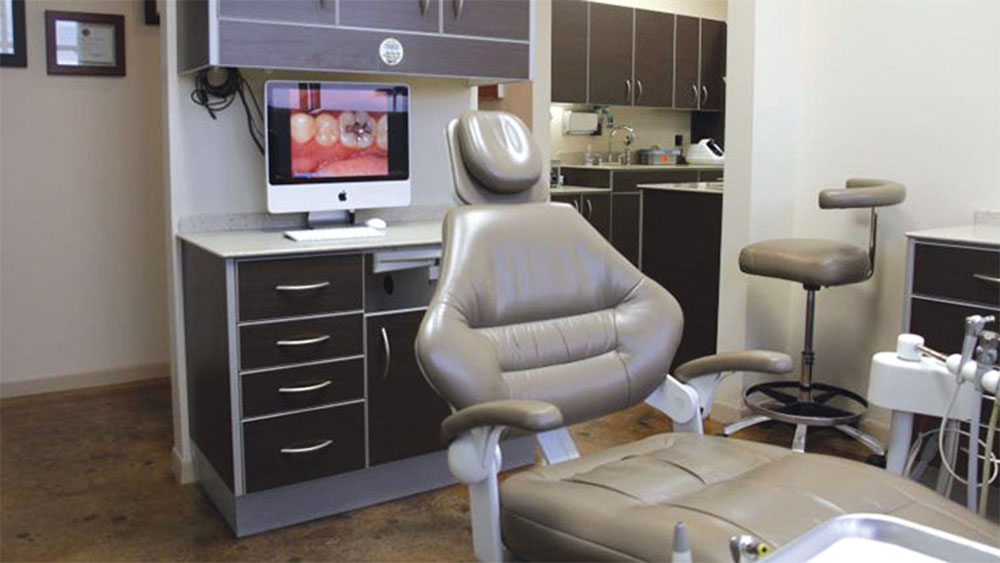
JA: Absolutely. For instance, my buddy who was a patient first and then became a friend, he’s never going to go to another dentist. He’s my patient for life. I’m in it for the long haul. There’s some places where they get people in and hammer in same-day treatment, “get them in, get them in, get them in.” And if they get all their treatment done and they never come back again, they’re fine with it. I would much rather have a patient for 20 years than try to squeeze every little drop of blood I can out of them in one visit and never see them again. I think they’re much more valuable that way. I think they’re a more valuable asset to your practice when you have long-standing patients. To me, it’s the long game.
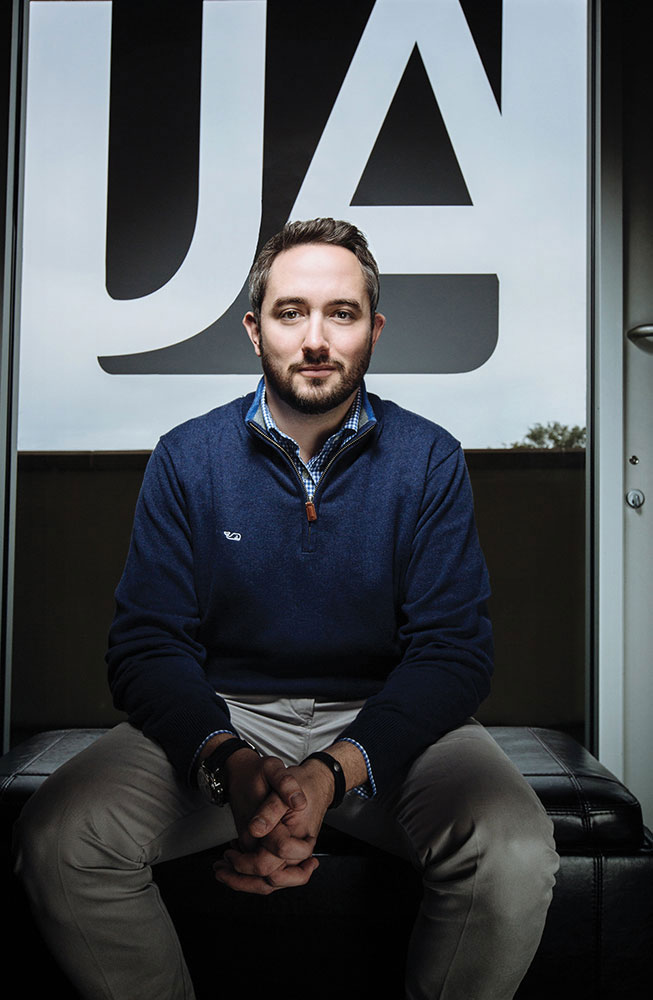
MD: You know what? I think that’s exactly the same way that my dad practiced. He was a solo practitioner his whole life. He never had aspirations to build a group practice, or if he did he never acted on those. He was “just” a solo practitioner his entire career, and he put four of us kids through college and had plenty to retire (well, as soon as I bought his practice). He retired and traveled with my mom for two decades before she passed away. He still enjoys his life, and he really had a lot of the same themes and same feelings about practice that you do as well. So, it’s really good to see that type of spirit is still alive; I think that you’re going to be just fine doing it on your own this way because even though it’s 2015, and maybe some would say it’s not the “Golden Age” of dentistry anymore, I think you’re proving that you can still have that same kind of attitude. Put patients first, want to be friends with them, and still make it a great career. Josh, thank you for your time. I always enjoy getting to spend time with you.
JA: Thanks, man. I appreciate the opportunity.

